Chinese Name: 尖沙咀 Pronunciation: Jiānshāzuǐ
Recommended Visiting Time: 1 Day
Best Visiting Season: Autumn and Winter
Address: Southside of the Kowloon Peninsula, Hong Kong Special Administrative Region, China
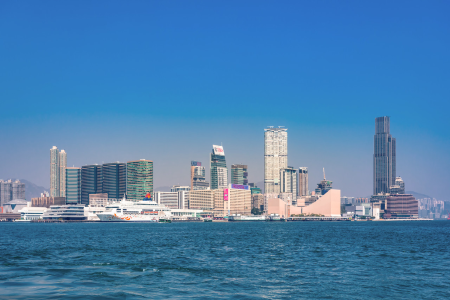
Tsim Sha Tsui, a major tourist center in Hong Kong, with many high-end shops and restaurants for tourists, is located at the southern end of the Kowloon Peninsula. According to an ancient book in the Ming Dynasty (1368-1644), the sea water in the area was blocked by the Kwun Chung Mountain, then formed a sandy beach coupled with the uneven, long, and sharp coastline, therefore this area is called Tsim Sha Tsui.
Its north is bounded by Austin Road, Canton Road is its western edge, and Chatham Road marks its eastern end. Victoria Harbour lies between Tsim Sha Tsui and Central and Wan Chai on Hong Kong Island. From a geographical point of view, Tsim Sha Tsui is a cape at the southern end of the Kowloon Peninsula, adjacent to Hung Hom Bay.
The original Tsim Sha Tsui was about the area between Salisbury Road and Chatham Road. There are two parallel headlands: Kowloon Point and Blackhead Point. There is also a small bay between the two capes. After several reclamation works, Tsim Sha Tsui has earned a lot of land area, but it is still a highly developed area and has always been the heart of Hong Kong.
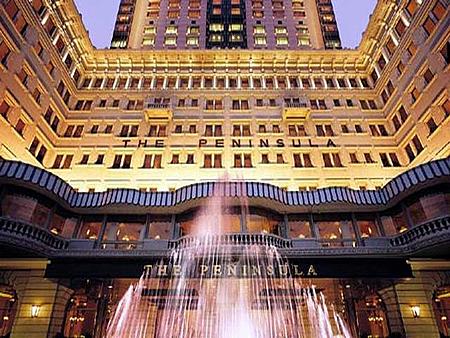
A number of cultures can be found in Tsim Sha Tsui. The Chunking Mansions, home to people of South Asian and African descent, is particularly famous, and entering the building is like entering India. Tsim Sha Tsui has a Muslim mosque, the largest in Hong Kong, located next to Kowloon Park. The noble five-star Peninsula Hotel is full of British style, located opposite the Space Museum, and you can see Victoria Harbour view from hotel rooms. Its British afternoon tea is also very well-known, and the ground shops are dominated by women’s high-end brands. Turkish, Russian, Italian, and Japanese cuisines can be found in Knutsford Terrace and Ashley Road.
Tsim Sha Tsui is a tourist area, so there are many international tourists on the street, which also gives you a sense of being in a foreign country.
Tsim Sha Tsui has a number of shopping malls, including Silvercord Centre, Sun Plaza, Miramar Shop, New World Centre, and so on. Among them, Harbour City is a super-large shopping mall, adjacent to Tsim Sha Tsui Star Ferry Terminal, consisting of Ocean Centre, the Gateway, New Area of Harbour City, Ocean Terminal, including more than 400 restaurants and shops, two theaters and large toy company--Toys “R” Us, and also has a viewing platform with a panoramic view of Victoria Harbour.
Tsim Sha Tsui, at the end of the land on the east coast of the Pearl River Delta, has been a hub of the sea route in Southern China since ancient times. At the beginning of the 19th century, as Guangzhou became the sea trading center of the Qing Dynasty, a large number of foreign merchant ships berthed off Tsim Sha Tsui. On July 7, 1839, a British sailor in Tsim Sha Tsui was drunken and create a disturbance, beating the villager Lin Weixi to death, which is called the Lin Weixi Incident, and it was one of the events that led to the Opium Wars.

In 1860, under the Beijing Treaty, the Kowloon Peninsula was ceded to Britain, including the entire Tsim Sha Tsui. After the British occupation of Tsim Sha Tsui, military barracks and the Marine Police Headquarters were built there, and the western seaside of Tsim Sha Tsui was filled for maritime use. Since the launch of the Star Ferry in 1888, Tsim Sha Tsui has prospered and become an emerging residential area for foreigners.
Tsim Sha Tsui was once the terminal of the Guangdong-Kowloon Railway (GKR). Since the opening of the Hong Kong section of the GKR on October 1, 1910, the construction of the Tsim Sha Tsui Railway Station began in 1913. The Tsim Sha Tsui Clock Tower was completed in 1915 as part of the Railway Station. Tsim Sha Tsui became the hub of Hong Kong’s traffic at that time.
In the 1970s, reclamation works were carried out on the west bank of Hung Hom Bay, east of Tsim Sha Tsui, which developed the land of East Tsim Sha Tsui and Hung Hom. With the development of Tsim Sha Tsui, the main building of the Railway Station was demolished in 1978 and then the Hong Kong Space Museum and the Hong Kong Cultural Centre were built. The Clock Tower is surrounded by a square in front of the Hong Kong Cultural Centre and has become a landmark in Hong Kong.
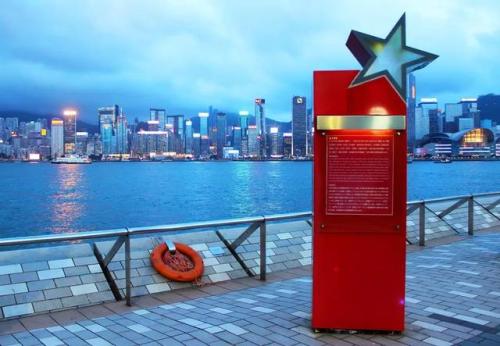
Tsim Sha Tsui Promenade at the New World Centre, facing Victoria Harbour, features the Hong Kong Avenue of Stars modeled on the Hollywood Walk of Fame. The Avenue of Stars is a tourist attraction in Hong Kong, which celebrates the contribution of filmmakers behind the scenes and documents Hong Kong’s 100-year film history, and it is just like a museum of Hong Kong films, allowing visitors to experience the growth of Hong Kong’s film industry together. Visitors can admire the handprints, plaques, and sculptures of many outstanding film industry figures and relive the style of different filmmakers.
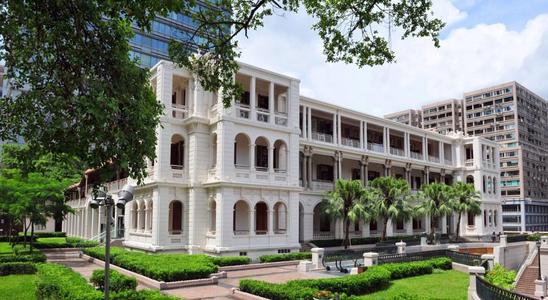
The former Marine Police Headquarters was converted into Hullett House (1881 Heritage), which is one of the statutory monuments in Hong Kong. In the year of 1881, Heritage incorporates elements of Chinese culture into hotels and restaurants, which are very creative and unique. Within Hullett House, there are five restaurants with different themes, including The Parlour, The Stables Grill, Long Tao House, Mariners’ Rest, and St. George. In addition, there will be performances of Chinese culture in the open spaces in front of the building, such as shadow operas, as well as Hong Kong’s unique “Playing Little Man” performances.
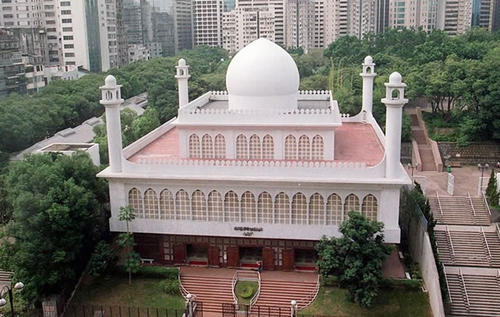
The Kowloon Mosque, officially named Kowloon Mosque and Islamic Centre, is located in Tsim Sha Tsui and is the largest mosque in Hong Kong. The mosque has 4 stories, made of marble, with a large peach-shaped ball at the top, while the four corners feature minarets with a variety of window flowers and strong Islamic colors. The Kowloon Mosque itself was the Whitfield Barracks of the British Army, and many of the soldiers recruited from India and other South Asian countries were Islamists, so the mosque was built in 1896 for British Indian Muslim soldiers. It was rebuilt in 1902 and 1980 and has been opened up to Islamists of all ethnic groups in Hong Kong.
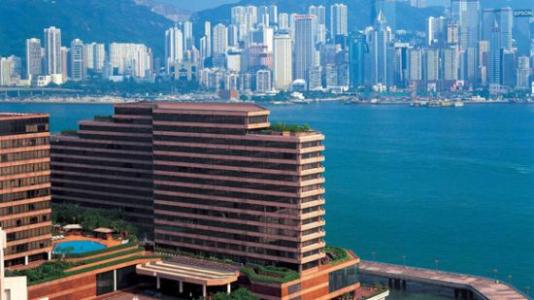
The famous hotels in Tsim Sha Tsui are the Peninsula Hotel, InterContinental Hong Kong, Sheraton Hong Kong Hotel & Towers, 3 Marco Polo Hong Kong Hotels, and the rebuilt Hyatt Regency Hong Kong, with a number of high-end restaurants and banquet halls on site. There are also many low-cost hotels. The Chunking Mansions in the film Chungking Express, located on Nathan Road, south of Tsim Sha Tsui, is a mixed-use building that brings together cheap hotels, Indian restaurants, and foreign exchange traders.

St. Mary’s Canossian College was founded by the Canossian Daughters of Charity in 1900. St. Michael’s Tower, the school building, is also called St. Michael Building or Old Building, and it was listed as a Grade II listed historic building in Hong Kong in 1991. In 2010, the Main Building and St. Michael Building were both identified as Hong Kong’s Grade I historic buildings.
Rosary Church → Victoria Harbour → Star Ferry Pier → Star Ferry → Hong Kong Observation Wheel → Hong Kong Fringe Club → Graham Street
1. Get a pre-paid Octopus Card and use the MTR system so that you can arrive at your destination in a shorter time.
2. Taste the dim sum and other local snacks at the teahouses and canteens.
Take bus KMB1, KMB2, KMB6, or KMB7 and get off at Middle Road and Nathan Road Station.
Take Tsuen Wan Line and get off at Tsim Sha Tsui Station (Exit B1).
Take West Rail Line and get off at East Tsim Sha Tsui Station (Exit N5). And then you need to walk toward northwest along the Mody Road, turn right, walk about 210 meters along the Nathan Road to the destination.
Chinese: 请带我去尖沙咀。English: Please take me to Tsim Sha Tsui.
If you go to Tsim Sha Tsui from Hong Kong International Airport, it takes about 260 Hong Kong dollars (about 30 minutes).
If you go to Tsim Sha Tsui from Hong Kong West Kowloon Station, it takes about 30 Hong Kong dollars (about 8 minutes).
If you go to Tsim Sha Tsui from Renaissance Hong Kong Harbour View Hotel, it takes about 65 Hong Kong dollars (about 15 minutes).
